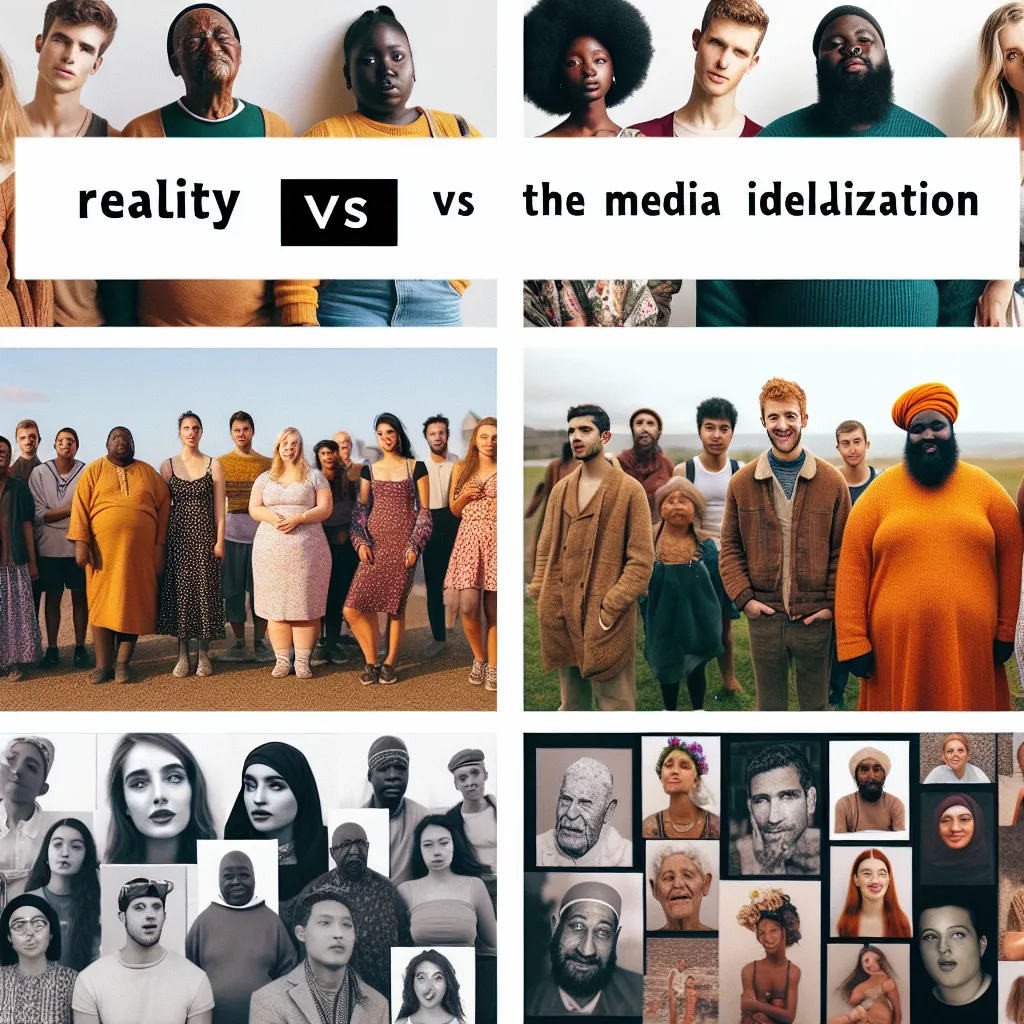The topic of media’s influence on body image is becoming increasingly relevant in IELTS Writing Task 2. Based on recent trends and past exam questions, it’s likely that this theme will continue to appear in future tests. Let’s explore a sample question and provide a model answer to help you prepare for this important subject.

Analyzing the Question
Let’s consider the following IELTS Writing Task 2 question:
Many people believe that the media’s portrayal of ideal body types has a negative impact on individuals’ self-esteem and body image. To what extent do you agree or disagree with this statement?
This question falls under the “agree or disagree” category and requires you to express your opinion on the media’s influence on body image and self-esteem. It’s essential to clearly state your position and provide well-structured arguments to support your view.
Sample Essay
Here’s a model answer that addresses the question:
In today’s digital age, the media’s representation of ideal body types has become increasingly pervasive, leading to widespread concern about its impact on individuals’ self-perception. I strongly agree that media portrayals of unrealistic body standards have a significant negative effect on people’s self-esteem and body image. This essay will explore the reasons behind this viewpoint and provide examples to support this stance.
Firstly, the media’s constant bombardment of idealized body images creates unrealistic expectations for the average person. Magazines, social media platforms, and advertisements often showcase photoshopped and heavily edited images of models and celebrities, presenting an unattainable standard of beauty. This relentless exposure to “perfect” bodies can lead individuals, particularly young people, to develop a distorted view of what constitutes a normal or healthy body shape. Consequently, many people experience feelings of inadequacy and low self-worth when comparing themselves to these unrealistic ideals.
Moreover, the narrow representation of body types in the media contributes to a lack of diversity in beauty standards. The overwhelming focus on thin, toned bodies for women and muscular physiques for men marginalizes those who do not fit these molds. This limited portrayal can lead to body dissatisfaction among individuals whose natural body types differ from the media’s ideal, potentially resulting in harmful behaviors such as extreme dieting or excessive exercise. The impact of social media on body image is particularly pronounced, as users are constantly exposed to curated images of seemingly perfect bodies.
However, it is important to acknowledge that some argue that media representation of diverse body types has improved in recent years. While this is true to some extent, with some brands and publications making efforts to include more diverse models, the overall impact of mainstream media still leans heavily towards promoting unrealistic beauty standards. The pervasive nature of these idealized images continues to outweigh the limited progress made in body diversity representation.
In conclusion, the media’s portrayal of ideal body types undoubtedly has a detrimental effect on individuals’ self-esteem and body image. The constant exposure to unrealistic standards and the lack of diverse representation contribute significantly to negative self-perception. To mitigate these effects, it is crucial for media outlets to promote a more inclusive and realistic range of body types, and for individuals to develop critical media literacy skills to navigate these influences effectively.
(Word count: 391)
Writing Tips
When addressing this topic, keep the following points in mind:
- Clear stance: Ensure you clearly state your position on the issue in the introduction.
- Balanced argument: While you may agree or disagree, acknowledge the opposing viewpoint to demonstrate a nuanced understanding.
- Specific examples: Use concrete examples to illustrate your points, such as referencing specific media platforms or advertising campaigns.
- Cohesive structure: Use linking words and phrases to connect your ideas smoothly.
- Formal tone: Maintain a formal academic tone throughout the essay.
Key Vocabulary
Here are some important terms to remember when discussing media influence on body image:
- Body image (noun) /ˈbɒd.i ˌɪm.ɪdʒ/: The perception that a person has of their physical self.
- Self-esteem (noun) /ˌself.ɪˈstiːm/: Confidence in one’s own worth or abilities.
- Idealized (adjective) /aɪˈdɪə.laɪzd/: Regarded or represented as perfect or better than in reality.
- Pervasive (adjective) /pəˈveɪ.sɪv/: Spreading widely throughout an area or group of people.
- Marginalizes (verb) /ˈmɑː.dʒɪ.nəl.aɪz/: Treats a person, group, or concept as insignificant or peripheral.
- Distorted (adjective) /dɪˈstɔː.tɪd/: Giving a misleading or false account or impression.
- Unattainable (adjective) /ˌʌn.əˈteɪ.nə.bəl/: Not able to be reached or achieved.
- Body dissatisfaction (noun) /ˈbɒd.i ˌdɪs.æt.ɪsˈfæk.ʃən/: Negative subjective evaluation of one’s physical body.
Conclusion
The influence of media on body image is a complex and relevant topic for IELTS Writing Task 2. By understanding the key issues and using appropriate vocabulary, you can craft a compelling essay on this subject. Remember to practice with various question types related to this theme, such as discussing social media’s influence on youth behavior or exploring the influence of media representation on social attitudes. These related topics will help you develop a well-rounded understanding of media’s impact on society, which is crucial for success in the IELTS Writing Task 2.